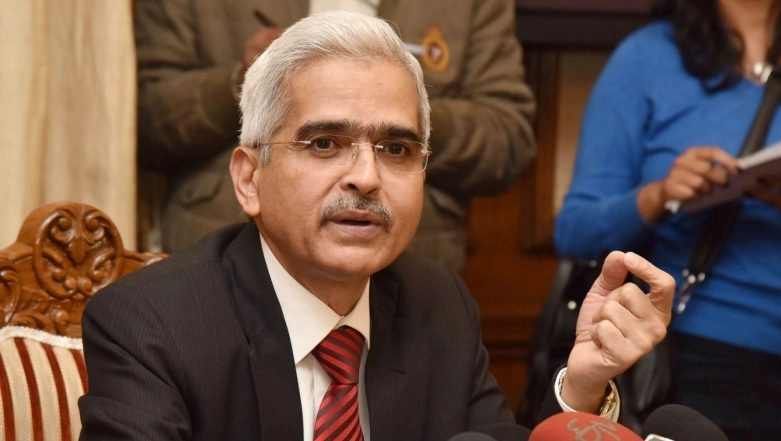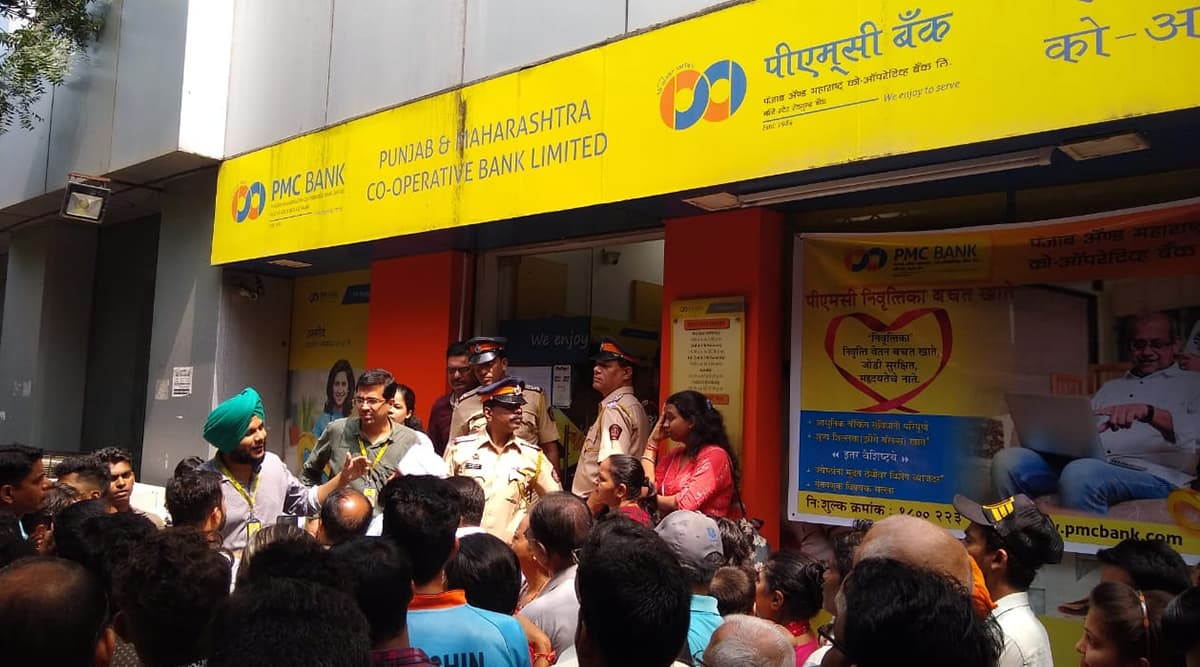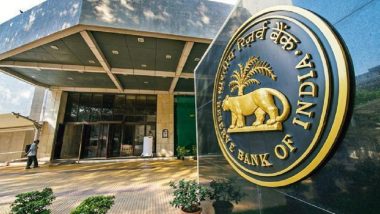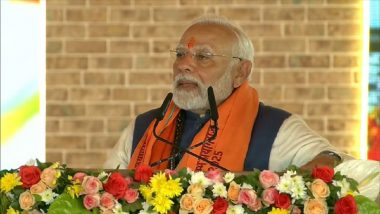The year 2019 has seen many ups and downs, but the Reserve Bank of India has gone through a tough phase amid economic slowdown. Despite taking numerous steps from cutting the repo rate to 135 basis points and merging public service banks from 27 to 12, RBI has tried everything, yet the fruitful results are far to be seen. Economic experts believe that things might change soon either by the end of fourth quarter of FY 19-20 or in the consecutive quarters of FY 20-21.
Beginning from January in 2019, during the period when Narendra Modi government was about to complete its first tenure, the RBI was under pressure to manage the financial stress and the first thing it did was removing Bank of India (BoI), Bank of Maharashtra (BoM) and Oriental Bank of Commerce from the prompt corrective action framework, so that lending restrictions on them can be lifted. Economic Slowdown: IMF Calls for Urgent and Quick Action by Indian Government to Tackle Slowdown.
Following is the break-up of RBI's key decisions announced on a quarterly basis, which helped the financial ship of India sail in the economic crisis in 2019:
Q4 FY 2018-19 (January-February-March): In the first month of this annual year, reports arrived that RBI had shut the printing of Rs 2,000 currency notes. Also, the RBI decided that it would buy back five securities maturing between January 2019 and December 2033. For this, it had said that it would inject Rs 37,500 crore into the system. In the second month, the RBI decided to cut the repo rate by 25 basis points. Apart from this, in this month, the RBI paid Rs 28,000 crore interim dividend to Central government ahead of elections.
With economic slowdown beginning to grip the nation, the RBI imposed monetary penalty on 36 banks for non-compliance direction issued by it on time-bound implementation and strengthening of SWIFT-related operational controls. It also fined at least 19 lenders more than 400 million rupees ($ 5.67 million) and ranged from 10 million rupees to 40 million rupees for each bank.

Q1 FY 2019-20 (April-May-June): RBI began its first quarter of the FY 2019-20 with a repo rate cut of 25 bps to 6 percent from earlier 6.25 percent. The decision was made after GDP growth declined from an estimated 7.4 percent to 7.2 percent. Amid the slowing economic growth and deputy governor Viral Acharya's resignation -- 6 months before his term ended -- the RBI slashed the repo rate by further 25 basis points to 5.75 percent from 6 percent. Gita Gopinath Becomes First Female Chief Economist to Join International Monetary Fund.
Q2 FY 2019-20 (July-August-September): After Acharya, RBI reappointed NS Vishwanathan as the Deputy Director for a period of one year. Following this, the Bimal Jalan panel finalised the report on RBI capital and recommended periodic transfer of surplus to Union government in 3-5 years. At that time RBI had over Rs 9 lakh crore of surplus capital with it.
Later in that quarter, RBI's Monetary Policy Committee again reduced the repo rate by 35 basis points to 5.4 percent. With this, it also cut GDP forecast to 6.9 percent for the current fiscal from 7 percent in June policy. Also, it imposed fine on seven PSBs of a combined total Rs 11 crore owing to noncompliance of its regulations.
In the month of September, RBI Governor gave his nod for transferring to the government a sum of Rs 1,76,051 crore, which comprised Rs 1,23,414 crore of surplus for the year 2018-19 and Rs 52,637 crore of excess provisions identified as per the revised Economic Capital Framework (ECF). Also, merger of 27 PSBs into 12 was decided by the Union Finance Minister. SBI Under-Reported Bad Loans in Regulatory Filing by Rs 11,932 Crore for FY19, Says RBI.
The apex bank further said that RBI has been cutting rates to give a boost to the economy as slowdown was visible for past few months. Das termed the low GDP growth of 5 percent as a 'surprise' but expressed confidence that the economy would stabilise. Meanwhile, the Punjab and Maharashtra Co-operative (PMC) Bank scam into light and RBI imposed restrictions.

Q3 FY 2019-20 (October-November-December): With the drop in the economy on a continual mode, and the revival seeming translucent, RBI further decided to slash the repo rate by another 25 bps to 5.15 percent at its fourth bi-monthly monetary policy review. Apart from this, it announced 24x7 NEFT fund transfer from December 2019 and made it clear that there would be levying of charges on NEFT payment from January 2020.
In the meantime, reports arrived that consumer price index (CPI)-based inflation for October 2019 came in at sixteen months high of 4.62 percent on higher food prices. It was 3.38 per cent in October 2018 and 3.99 percent as recorded in September 2019. Also, reports about PM Narendra Modi-led Union government ignoring RBI's recommendation not to go ahead with the electoral bonds scheme came to light. NPAs Cost Indian Banks, Rs 1.76 Lakh Crore Lost in 3 Years Due to Waiving Loans of Defaulters, Reveals RBI Report.
Last month, the third quarter of FY 2019-20, the RBI -- to many's surprise -- didn't make any changes in the repo rate but sharply cut annual GDP growth forecast from 6.1 percent to 5 percent. Earlier, there was a demand from the market for the apex bank to cut the repo rate by another 25 bps. It is to be known that growth in the second quarter reached a six-year low of 4.5 per cent. The central bank had already cut repo rate five times since January by 135 bps without any improvement in growth, if the condition prevails, the RBI might consider a rate cut by another 25 bps.

Regarding the gross non-performing assets (NPAs), RBI in its report had said that the gross non-performing loan ratio remained stable at 9.1 per cent as of September-end. It mentioned that net NPAs nearly halved to 3.7 per cent in FY 19-20 from 6 percent in FY 18-19. RBI also informed that the complaints to banking ombudsman rose by nearly 20 per cent to over 1.96 lakh during 2018-19. GDP Growth Forecast Slashed From 6.1% to 5% by RBI Monetary Policy Committee, Inflation Target Also Revised.
Though there were numerous other decisions taken by the Reserve Bank of India to keep the wheels of Indian economy moving, amid crisis, let's keep it for another day to discuss. There were some tough decisions taken by the apex bank and some of them were questioned by economic experts, following which RBI said that they are looking into it. With the year almost on the verge of completion, we hope the next quarter and 2020 comes with some good news on the economic front.
(The above story first appeared on LatestLY on Dec 27, 2019 11:14 AM IST. For more news and updates on politics, world, sports, entertainment and lifestyle, log on to our website latestly.com).













 Quickly
Quickly





















